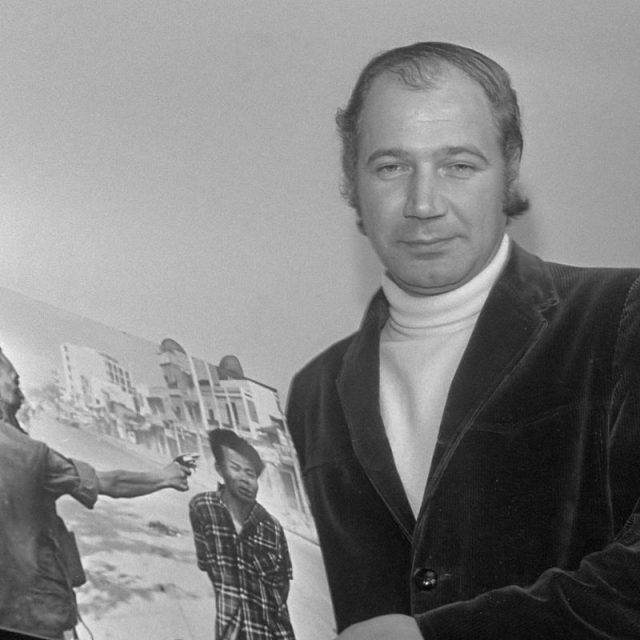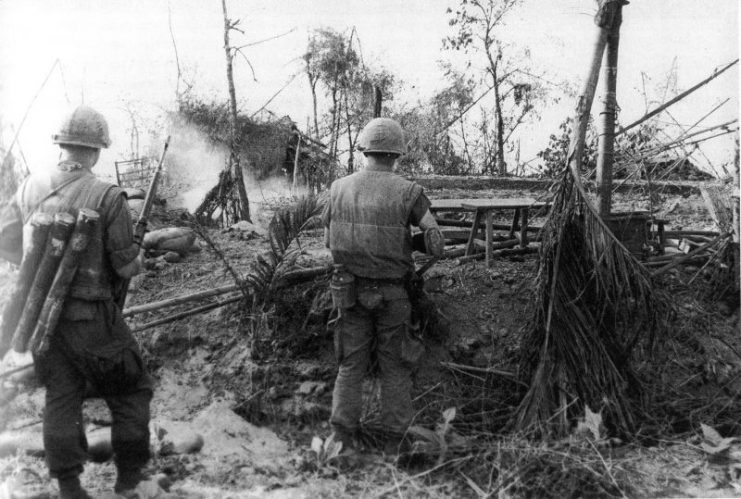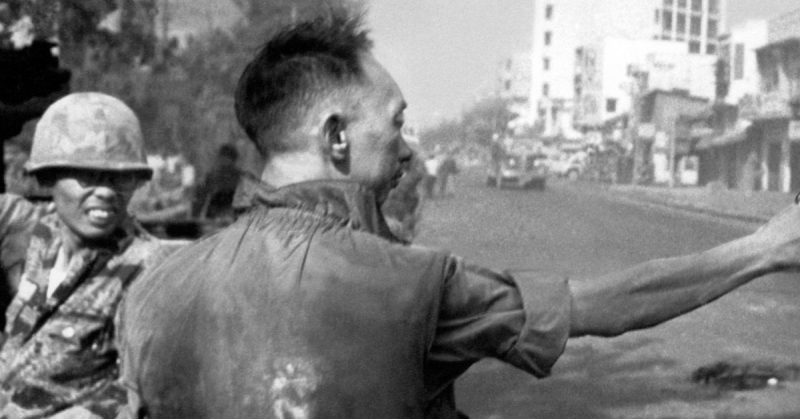A Picture that needs more than a 1,000 words
The old saying is that a picture is worth a thousand words. The execution of Nguyen Van Lem by South Vietnamese Brigadier General Loan galvanized world opinion and came to represent the chaos, futility, and moral uncertainty regarding the US effort in Vietnam.
While the picture is evocative and came to represent the failure of the US effort in Vietnam, there is much more to the story told by the photographer himself and by the General who made the fatal shot.
The picture doesn’t accurately describe the chaos and heroism surrounding the Tet Offensive. Despite being surprised and outnumbered during the traditional holiday, soldiers like General Loan and Green Beret Drew Dix heroically fought back.

Under withering fire, Drew Dix saved numerous innocent civilians and cleared an almost entire village of Viet Cong soldiers. Heavy street fighting threw Saigon into chaos and General Loan was critical in organizing South Vietnamese soldiers. The American liaison credits him for preventing the fall of the city in those early hours.
General Loan found Lem near a mass grave of more than 30 civilians. Justifiably angry, convinced of Lem’s guilt, and dedicated to restoring order General Loan didn’t hesitate to do what he felt was necessary and a photographer captured the fatal and dramatic moment.

But the story didn’t end there. The photographer himself had mixed feelings about the event. Adams originally felt like he had captured a cold blooded killing. After learning of the entire situation and learning more about the Loan, he came to change his mind.
Adam’s later became guilty over his role in the matter because he gained famed and fortune from a photograph of a literal death that killed somebodys reputation for the rest of his life. And Adams was rubbing shoulders with presidents and winning Pulitzer prizes for it.

After the war, as a civilian and refugee in America Loan was almost deported. The photographer Adams testified in his favor which let him stay in the country. Loan later started a semi successful pizza restaurant in the DC area.
The negative publicity of the photo still haunted him and he eventually closed the shop in part due to the lingering controversy.
The photo itself is evocative and tells a gripping story about the violence of war. But there is more to the story that the photo doesn’t show.
Those immediate hours of the Tet Offensive were chaotic, and people like Loan actually rose to the occasion. This was part of what they saw as justice for brutal killers, and the individuals like the photographer had mixed feelings about profiting from the incident on the backs of deaths and destroyed lives.
The New York Times quote that ‘Adams himself, before his death in 2004, expressed discomfort with the consequences of his photo. He noted that photographs, by nature, exclude context: in this case, that the prisoner had killed the family of one of General Loan’s deputies.
“Two people died in that photograph: the recipient of the bullet and Gen. Nguyen Ngoc Loan,” he wrote in Time magazine. “The general killed the Viet Cong; I killed the general with my camera.”
“Still photographs,” Adams wrote, “are the most powerful weapon in the world.”
Nguyen Ngoc Loan saw no repercussions for his actions and lived under a new name in the safety of the USA, dying only in 1998.
